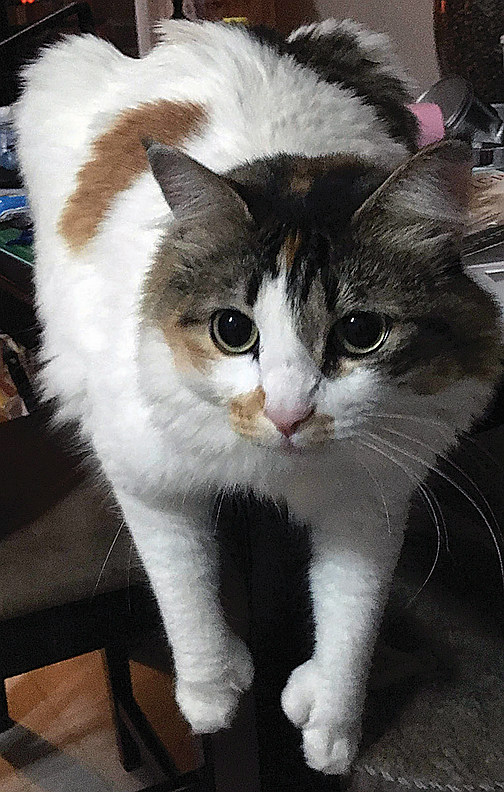By Cameron Dexter
I can hear it now. What? Cat genes? Oh yeah! Get ready to buckle up because it gets interesting!
This edition’s topic of choice is cat genetics regarding cat coats, paws, and claws! There will be some talk about chromosomes but today we’re just gonna try and keep it simple and explain in as simple terms as we can keep it!

That said, we’re starting with Tuxedo cats today!
This coloration can happen across all types of different cat breeds. Tuxedo cats can be born at equal rates between male or female genders and when in gestation, a tuxedo embryo will develop pigment cells that, while they’re multiplying, move and shift.
During development they don’t seem to give any indication on following patterns! This means that the coat and color patterns between parents and offspring are similar but not identical given the natural drifting of the pigment cells during the developmental stages!
The same cannot be said about calicos and orange cats! These two breeds of cat both share characteristics with a genetic marker that dictates gender and coat color but in differing ways compared to the tuxedo!
Calico females and orange male cats are both different genetic compositions on a chromosomal level that tells us the color of the coat and the gender at the same time. It is for this reason that having a male calico cat is extremely rare! On average, 80% of orange cats are male and 99% of calico cats are female! It’s estimated that for every 3,000 female calicos born there is 1 calico male!
Have YOU ever seen a cat with extra toes? These multi-toed kitties named polydactyls after the Greek words poly (many), and dactylys (fingers).
A cat with polydactylism can come in a variety of ways depending on where the toes are on their paws. Those being Postaxial, preaxial, and mesoaxial. Postaxial, post (outside) axial (axis) is when the cat’s extra toes are on the outside of the paw. In preaxial, pre (before), axial (axis) polydactyls the cat’s extra toes are on the inner side towards the first digit of the paw.
Did you also know that while cats are usually affected by polydactylism on their front paws, that it can be present on hind paws! Most of the time however it’s rare for a cat to have polydactylism on both paws.
Here’s another cat fact! I’m sure we’ve all heard about cats getting stuck in trees. If you’ve ever wondered why that is, I have the answer for you today! When a cat climbs a tree, their claws curl and point downwards, giving them grip and traction on bark as they scale upright. But!

When a cat is trying to climb down headfirst, their claws would curl and point upwards, thus not giving them any traction or grip! So, in order to get down properly without jumping down the cat would need to back down the tree!
With extra toes comes great responsibility! A cat’s paw is much like ours! Their paw pads are like our palms and toes are much like our fingers.
Hold onto your hats for this next tidbit! When you declaw a cat it’s the equivalent of taking your finger to the middle knuckle! Please think twice before you get your critter declawed! Bone spurs are a nasty thing for any critter to deal with! Yes, the bone has been known to grow back, and it’s extremely uncomfortable for the critter.
This was just the very tip of the iceberg, there is an overwhelming amount of information out there about cat genetics! From multiple designations of fur color to hair size and length! If this was interesting to you, I encourage you to look deeper into what else there is out there!

